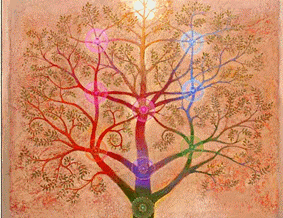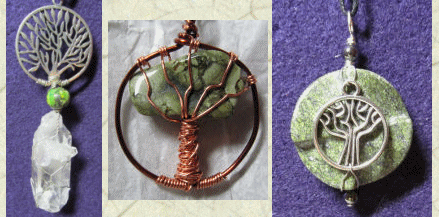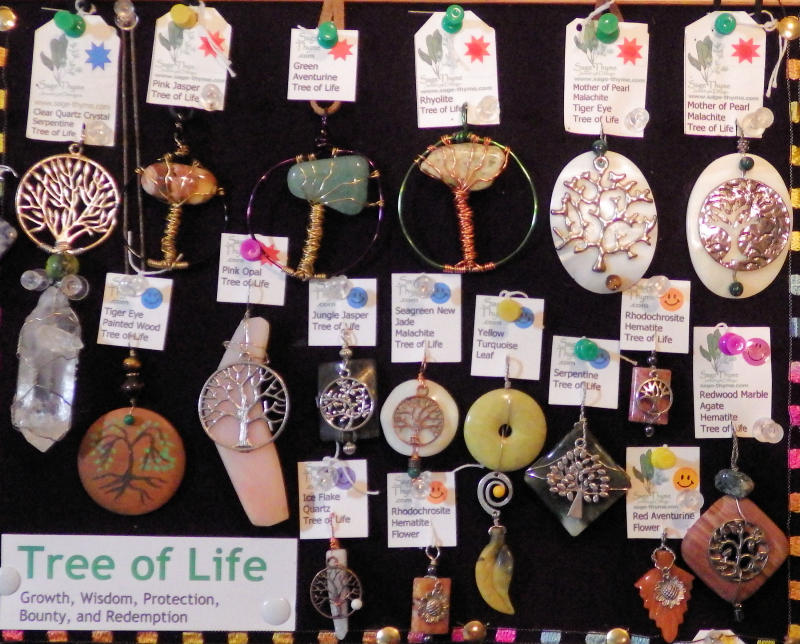The Cosmic and Holy Tree of Life

Introduction
The Tree of Life, also known as the Cosmic Tree, the World Tree, and the Holy Tree, is a universal symbol found in many spiritual and mythological traditions around the world. In nearly every culture the Tree of Life symbolizes growth, wisdom, protection, strength, bounty, beauty, redemption, and the interconnectedness of all life on our beautiful planet.
A tree provides shelter, growing tall and strong with deep roots. It reaches skyward, loses its leaves and grows new ones, and gives shelter. A tree also bears seeds or fruits, which contain the essence of the tree itself. This continuous regeneration is a potent symbol of immortality. With nurture and care, a tree will live for generations.
With branches reaching into the sky and roots delving deep in the earth, the Tree of Life dwells in three worlds. It becomes a link between heaven, earth, and the underworld, uniting above and below.
The Tree of life is also seen as a giver of gifts and spiritual wisdom. The tree as the abode of the Gods is another feature common to many mythologies; in some, the tree itself is a God. The Tree of Life connects all forms of creation and is considered to be the symbol of “Creator”.
Interpretations
Below is a sampling of a myriad of spiritual traditions, cultures, and religions, each with its own interpretation of the Tree of Life.
- In Judeo-Christian mythology, a tree sits at the center of both the Heavenly and Earthly Edens. The Tree of Heaven sits at the center of creation, providing the source of the primordial rivers that water the earth.
- In Judaism the Tree of Life is a symbol of the life-giving source that sustains and nourishes us. Its beauty of gold and crimson transcends all other things created; its crown covers the entire garden and four streams – of milk, honey, wine and oil – issue from its roots. In the Jewish creation story, it is the fruit of a tree that confers immortality. The Tree of Life is central to modern Kabbalistic study, embodying creation, existence, and the return to the divine in ten spheres with twenty-two inter-connecting paths. The Kabbalah is a magical framework for the Hebrews’ mystical thoughts.
- In Christianity, the tree is seen as both the vehicle by which sin came into the world (via the serpent and the Tree of the Knowledge in the Garden of Eden), and as a symbol of redemption, as Jesus was crucified on a cross made from a tree. This image has become the symbol of the World Savior on the Tree of Life. The life and teaching of Christ is a model of the path of initiation the Tree of Life provides.
- In Islam, it is the Tooba Tree of the Koran from whose roots spring milk, honey, and wine.
- In Nordic mythology, Odin is the god who rules all magic and guards the great well of wisdom and knowledge at the root of the World Tree, Yggdrasill, whose strength supports the entire universe. Here Odin received the gift of language while suspended upside down in the World Ash. Ygdrassil has its roots in the underworld while its branches support the abode of the Gods. The apples of Idun give the Norse gods their powers.
- In Egyptian mythology, the first couple, Isis and Osiris, emerged from their tree of life, the acacia tree of Iusaaset. This tree stood on the threshold of life and death, connecting the worlds. East, the direction of the rising Sun, was associated with Life, while West with its setting sun, was seen as the direction of death, of the underworld.
- To the Mayans, the branches of the Tree of Life, Yaxche, support the heavens. Heaven, Earth, and the Underworld (Xibalba) were connected by the “world tree”. This tree grew at the locus of creation, all things flowing out from that spot intofour directions. The Mayan tree of life is a cross with its center point one of “absolute beginning,” the source of all creation. Its branches pass through each of the three layers of existence: underworld, earth, and sky.
- In Taoist tradition, the fruit is a divine peach that gives the gift of immortality.
- Buddha received his enlightenment while meditating beneath the great Bodhi tree. Buddha was said to redeem the whole universe under its protective branches.
- In many Shamanic cosmologies, the Cosmic Tree is said to connect the Underworld, Middle world and Above world. During initiation, the Shaman learns to travel comfortably in all three realms. In some traditions the Underworld contains power animals and helper guides for healing.
- From the ancient Minoan culture of Crete, the Tree of Life is connected to the Mysteries of the Labyrinth. The Tree of Life is said to occupy the very center of the labyrinth. The goal of initiation is to claim one’s own self by winding into the center of the maze, climb the Tree of Life and thus connect with one’s own divinity as well as its divine source.
- In the Native American sun dance as well as the European May pole dance traditions, dancers attach themselves to the central pole, a symbol of the World tree. May pole dancers are attached to the Tree with brightly colored streamers in order to become revitalized after the long winter. The sun dance promotes vitality, the energy generated around the axis of the Tree is said to bring life into being.
- The oldest name of Babylon, Tin-tir-ki, means “the place of the tree of life.” To the Babylonians, this was a tree with magical fruit, which could only be picked by the gods. Earlier Sumerian traditions played a major role in Babylonian culture; the ancient Sumerian god Dammuzi was personified as a tree.
- In ancient Persia, the fruit of the haoma bears the essence of immortality.
- The Hindu Brahman was personified as a tree.
- The Byzantine World Tree represents the omnipotence of the Christian god.
- From a depth psychology perspective, the tree is seen as a powerful symbol of growth, as the tree is the only living thing that continues to grow throughout its lifetime.
Gallery Samples


